Chocolate - Fascinating Facts About Chocolate
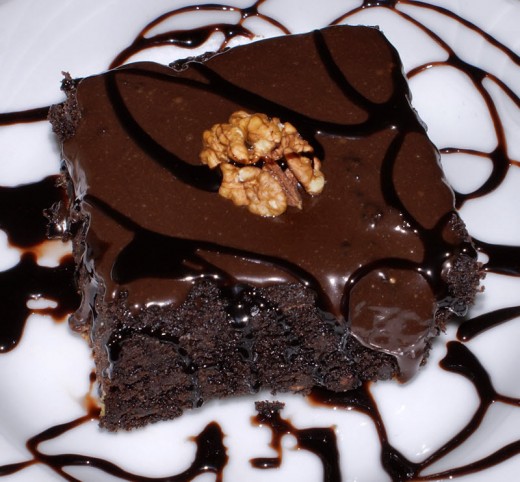
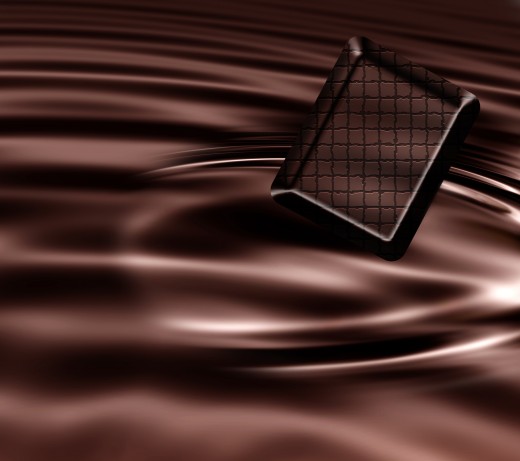
Cocoa Pod
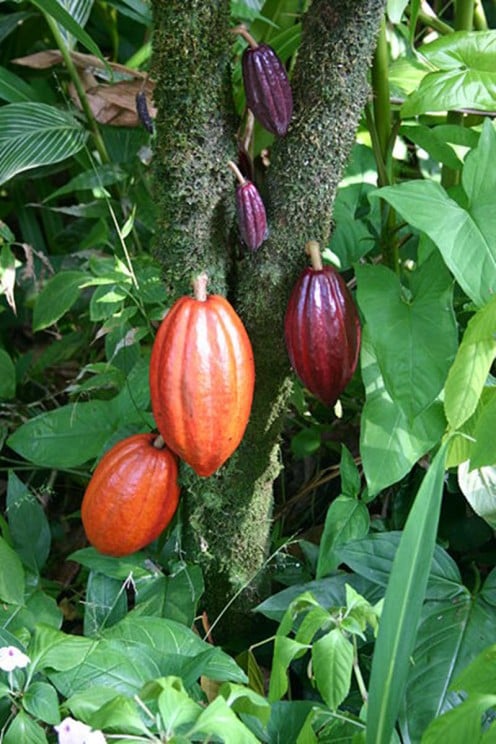
History of Chocolate
Chocolate is a sweet food made from the cocoa bean. It is fermented, roasted, ground to form a paste of cocoa liquid from which is extracted the fat called cocoa butter. Chocolate is made from a mixture, in varying proportions, of cocoa liquid, cocoa butter and sugar as well as any additional spices such as vanilla.
Originally consumed as a spicy drink in Central America, called xocoatl, and initially restricted to the nobility and the wealthy, it becomes more democratic with the industrial revolution, which made chocolate widely available by simplifying and mechanizing its production. In modern times, chocolate is consumed as a solid (dark chocolate or milk) or liquid (hot chocolate). Chocolate is found in many desserts such as candies, biscuits, cakes, ice cream, pies. It has become traditional to give chocolate molded into different shapes on various holidays: eggs, bunnies and bells on Easter, coins for Hanukkah and Christmas, and hearts for Valentine's Day.
The effects of chocolate on health are unclear. It is popular with gourmets and there are many publications and websites claiming that chocolate his good for you, yet many studies on this subject remain largely inconclusive. Some people equate chocolate with a drug, and claim to be chocoholics, but this claim is unproven.
The word chocolate come from the Nahuatl xocolatl , which is a combination of words xocolli (meaning "acid") and atl (which means "water"). The Aztecs associated chocolate with Xochiquetzal , the goddess of fertility. The Maya also associated it with their god of fertility. Chocolate, both the word and the substance, entered European culture after the Spanish conquest of Mexico. Before that, chocolate was unknown in Europe.
The Mexican philologist Ignacio Davila Garibi Mexico suggests that the Spaniards coined the word chocolate by linking the term chocol and replacing the Maya word haa (meaning water) with the term Aztec atl. However, it seems more likely that the Aztecs themselves coined the word, having long ago adopted in Nahuatl the Mayan word for cacao bean. Indeed, the Spanish had little contact with the Mayans before Cortés reported to the king of Spain a chocolate drink known to xocolatl. The Mayan verb chokola'j meaning "to drink chocolate together," has also been suggested as possible origin.
Aztecs Making Chocolate
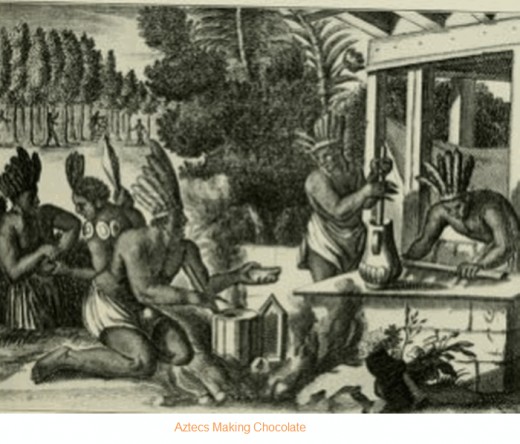
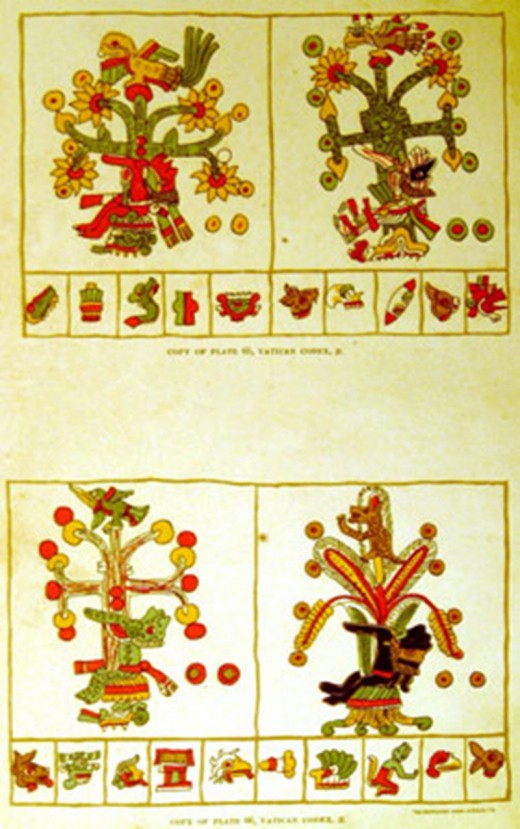
The Origins of Chocolate
The Mayan book of origins, the Popol Vuh, attributes the discovery of chocolate to the gods. In the legend, the head of the hero Hun Hunaphu, is cut off by the lords of Xibalba, and hung from a dead tree that miraculously gave fruit-shaped gourd called cocoa pods. The head then spits in the hand of a girl of Xibalba, the Maya underworld, thus ensuring her magic fertilization. That is why the Maya used chocolate as part of their marriage ceremonies. Cocoa also helps purify the young children in a Mayan ceremony. Similarly, the deceased was given cocoa for his journey to the afterlife
Originally from the tropical lowlands of South America and Central America, the cocoa producing cocoa beans, have grown for at least three millennia in this region and in the current Mexico. Since the Spanish conquest of Mexico, cocoa plants have been successfully cultivated in Africa and other warm climate regions.
Archaeological digs have confirmed that cocoa beans were used by ancient meso-American cultures as far back as 1100 and 1400 BC. Chemical analysis of residues on pottery shards from Honduras from that time period indicate that the cocoa beans were used to make fermented beverage. The drink was likely used for therapeutic purposes and religious rituals.
In pre-Columbian civilization, chocolate was a luxury item, and cocoa beans were uses as currency, to barter, to pay taxes and even to buy slaves. It is hard to believe that chocolate could ever equal the value of a human being! Following the Spanish conquest, it was possible to exchange the local cocoa currency into pesos. The value of one peso was set at 1,200 cocoa beans.
Originally chocolate was not sweet. The Maya cultivated cocoa and used the beans to make a frothy, bitter drink, named xocoatl, which was often flavored with the vanilla, pepper and annatto. A Mayan tomb dating back to the Classic Period (460-480 BC.), discovered in Guatemala, contained pottery which bore the Mayan character symbolizing cocoa, and which testing revealed contained residue from a chocolate drink. Other pottery with traces of cocoa was discovered in Belize, which confirms the existence of chocolate consumption in the sixth century. Documents written in Mayan characters attest that chocolate was used both for ceremonies and for daily life.
The Aztecs associate chocolate with Xochiquetzal, the goddess of fertility. They believed that the Xocoatl counteracted fatigue and this belief was probably based on the fact that cocoa actually contains, theobromine, which is known to increase alertness and stamina.
Cocoa was an extremely valuable commodity in pre-Columbian America. All territories conquered by the Aztecs were required to pay tax or tribute in cocoa beans.
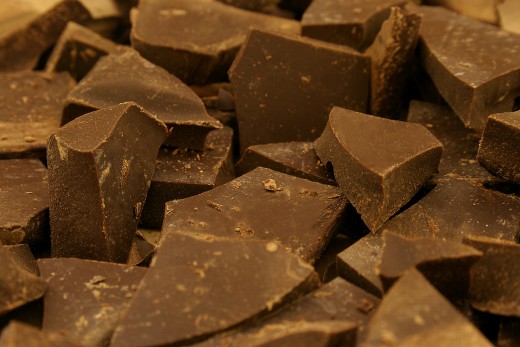
Chocolate Is Introduced to Europe
Until the sixteenth century, no European had ever heard of the popular drink of the people of Central America and of South America, and it took a while for chocolate to gain acceptance in Europe.
In 1494, Christopher Columbus threw overboard the beans that he had received from the Indians, apparently mistaking them for goat droppings. It was only later, in July 1508, on the island of Guanaja, that Columbus sampled the chocolate drink of the Indians for the first time.
The Spanish colonists quickly became fond of chocolate, though not all Spaniards shared their passion for the drink. José de Acosta, a Spanish Jesuit missionary who lived in Peru and Mexico in the late sixteenth century, wrote of chocolate:
"It is hateful to those who do not normally consume it, having a foam or froth that has very bad taste. Yes, it is a highly respected beverage among the Indians, they regale the nobles who cross their country with it. The Spaniards, both men and women who are accustomed to the country, are very fond of chocolate. They make different types, some hot, some cold, some temperate, and put a lot of chili pepper, with which they make a paste. They claim that it is good for the stomach to fight and against the cold. "
After the conquest of Mexico by the Spaniards chocolate was exported to Europe where it quickly became very popular at the court of Spain. The Spanish conquistador Hernán Cortés was the first to bring a small quantity of chocolate back to Europe. In the seventeenth century, chocolate became a popular treat for the Spanish aristocracy and clergy, though it was too expensive to be enjoyed by common folk. Gradually the use of chocolate spread to other Spanish dominions and colonies throughout the world.
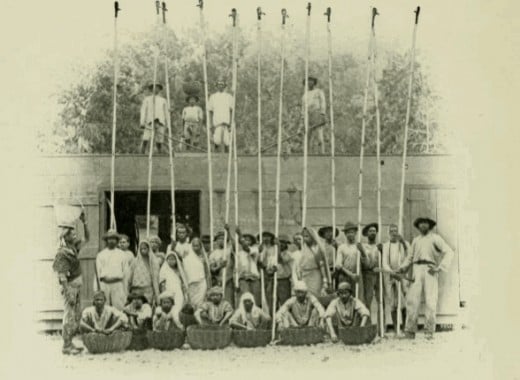
The first commercial shipment of chocolate to Europe (between Veracruz
and Seville) dates from 1585. Chocolate was then always served as a
beverage, but the Europeans added sugar and milk to neutralize the
natural bitterness, and they replaced the chili pepper with vanilla.
To
meet the strong demand for this new drink, Spanish armies began to
force the Mesoamericans to produce cocoa. However, cocoa remained a
luxury item which was very expensive and only the Spanish elite could
afford to drink it. In some ways, the chocolate drink was treated much
like a bottle of the most expensive wine vintage.
However,
two new developments would cause the price of chocolate to drop and lead
to it become one of the most popular and widely available
confectioneries: the first development was the discovery of the sugar
cane, which made it easier and cheaper to sweeten the chocolate, and the
second was the introduction of African slaves by the Spaniards into
their dominions. The use of slaves allowed the Spanish to cultivate
cocoa and sugar cane less expensively. In some ways, the Spaniard's use
of slaves to produce cocoa is reminiscent of the Aztec practice of
trading slaves for cocoa beans. In both cultures cocoa and chocolate
were considered more valuable than a human being's freedom. It is almost
impossible to believe that our ancestors could have been so misguided,
yet the fact is that even now cocoa is being produced in Third World
countries, particularly in Africa, using slave labor, and so the next
tasty chocolate treat you eat may have been produced by a slave toiling
in the fields under a mercilessly hot sun. The more things change the
more they stay the same!
At the same time, chocolate was also
becoming popular in other countries. In 1657 the first chocolaterie
opened in London. In 1689, the eminent physician and collector Hans
Sloane developed a milk chocolate drink in Jamaica which was initially
used by apothecaries, but later sold to the Cadbury brothers.
In
1615, chocolate was introduced into France to celebrate the marriage of
Anne of Austria, daughter of Spanish King Philip III and the King of
France Louis XIII. Later, Louis XIV and his wife Maria Theresa of
Austria brought chocolate into the court of Versailles where the French
nobility consumed vast quantities of chocolate beverages, which were
served hot like coffee. Chocolate remained the drink of the aristocracy
mere commoners did not have access to this exotic drink and there grew
up around the consumption of chocolate, snobbish rituals.
In 1662, the Pope issues a papal bull confirming that drinking chocolate did not violate the Church's requirement of fasting.
How is Chocolate Made
Chocolate Factory
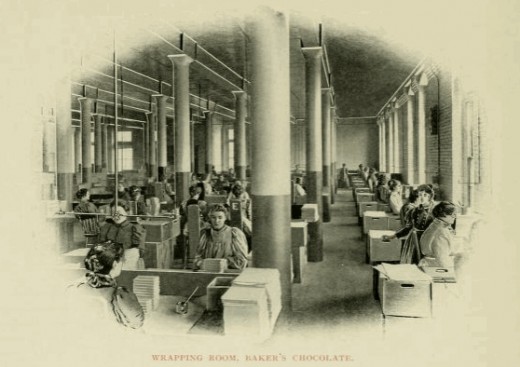
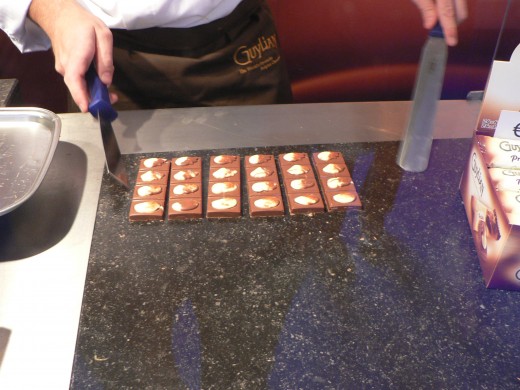
The Growth of the Modern Chocolate Industry
For several centuries, the method of making chocolate remains unchanged. Chocolate was consumed exclusively in liquid form. In the 1700s, mechanical mills began to be used to extract the cocoa butter, and this made it possible to create hard chocolate. It was not until the arrival of the Industrial Revolution that these mills are used on a larger scale. Gradually, factories were set up to exploit this new invention and make chocolate in forms that we know today.
In 1780, at Bristol, England, Joseph Storrs Fry opened a factory to produce chocolate dough: JSFry & Sons. The bulk of its production was sold to drugstores and pharmacies in the city. In 1795, his son improved production by using power from a steam engine for grinding cocoa beans. This allowed the company to produces a large quantity of chocolate batter to make chocolate drinks, chips, cakes, sweets and medical preparations. In addition to selling its product to apothecaries and pharmacists, the Fry chocolate factory catered to confectioners and reputable cooks. The Fry trademark is still in existence.
By the early nineteenth century, more and more chocolate factories are established in Europe, and chocolate becomes more readily available as mechanization leads to lower production costs. Chocolate begins to be costumed more for pleasure than for its supposed health benefits. The countries of France, Switzerland and Netherlands become the centers of the chocolate industry.
Chocolate also begins to be produced in the United States when, in 1780, and an apothecary named James Baker establishes the first chocolate factory. The first chocolate factory is established in Switzerland by François-Louis Cailler in 1819. It was followed six years later by Philippe Suchard, and by Charles-Amédée Kohler in 1830. The first factory in France was founded by chocolate maker Jules Pares in 1814, near Perpignan. In 1815, a Dutchman named Coenraad Johannes van Houten created the first factory in the Netherlands. New factories also appear in England. One example the case of Cadbury in 1824.
In 1821, the English chocolate maker Cadbury produced the first dark chocolate.
Originally, chocolate manufacturers focused on just making chocolate, but over time they diversified their production with sweets and cakes. Mechanization and competition among producers of chocolates led to a continued decline in the price of chocolate.
In order to meet the demands of the expanding industry, cacao trees were introduced into Africa and established the first plantations.
Old Fashioned Chocolate Baker
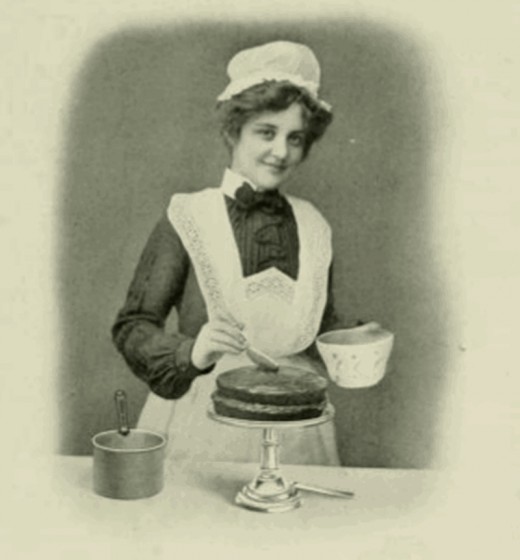
New Chocolate Treats
In 1828, Coenraad Johannes van Houten develops the first cocoa powder. Using a hydraulic press of his own invention, Van Houten succeeded in compressing the cocoa butter into cake form which could then reduced to powder. Van Houten was also the first to invent a process to separate lean cocoa (or cake) and cocoa butter, allowing manufacturers to adjust the ration of lean cocoa and butter in each production, leading to improved manufacturing techniques and allowing new products to be developed. The production of chocolate had entered the industrial age. Mechanization led to lower prices, which led to chocolate being enjoyed by more and more people. Van Houten, from his chocolate factory in Amsterdam, would sell his boxes of chocolate powder throughout all of Europe.
The year 1830 saw the appearance of chocolate hazelnut invented by Kohler as well as chocolate mousse and chocolate chip plate.
Joseph, Francis and Richard Fry, who headed the firm of Fry & Sons since the death of their father (in 1835), discovered in 1847 that a mix sugar, cocoa butter, cocoa powder produced a soft dough that could be poured into molds. This invention makes it possible to use in new ways, in blocks. This product is introduced to the public at a chocolate exhibition in Birmingham in 1849 under the name "Chocolat délicieux à manger" (Chocolate, Delicious to Eat).
By 1860, the firm of Fry & Sons house becomes the major chocolate manufacturer in England. Francis Fry (1803-1886), left alone to head the company after the death of his brothers in 1878 and 1879, was appointed the exclusive supplier of chocolates for the Royal Navy. This will contribute to the prosperity of the house Fry & Sons, which became in 1880 the principal chocolate manufacturer in the world. It then employed 1,500 workers.
Competition among manufacturers as well as an inexhaustible demand for chocolate by the public led toe more innovations. In 1876, Daniel Peter built a factory in Switzerland that was the first to produce milk chocolate using milk powder. In 1879, Daniel Peter partnered with Henri Nestlé (the inventor of condensed milk) to found the firm Nestle.
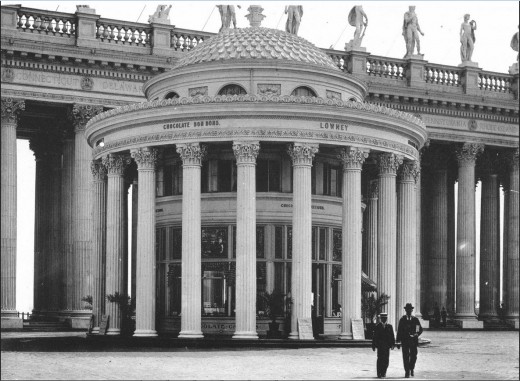
In 1879, Rodolphe Lindt developed a method of preparing chocolate called conching. This new refining process allows the manufacture of chocolate fondants. His technique consists of grinding the chocolate into a very fine powder in order to make the chocolate paste smoother. His secret was not revealed until in 1901.
In 1919 the fry company merged with Cadbury Brothers.
More innovations follow. In 1899, a Swiss named Jean Tobler begins marketing a triangular chocolate product that he calls Toblerone. It is the forerunner of the chocolate bars, which appear a short time later. In the early 1900s, a Dutchman named Kwatta invented the first chocolate bar. In the United States, and American named Mars introduced that Milky Way bar.
Last major innovation in the industry, white chocolate, is produced for the first time in Switzerland in 1930 by Nestlé, in order to use left over cocoa butter.
The chocolate industry would continue to be dominated by the Swiss until the first half of the twentieth century, when the American companies, Hershey's and Mars, would take the lead.

© 2010 Robert P









